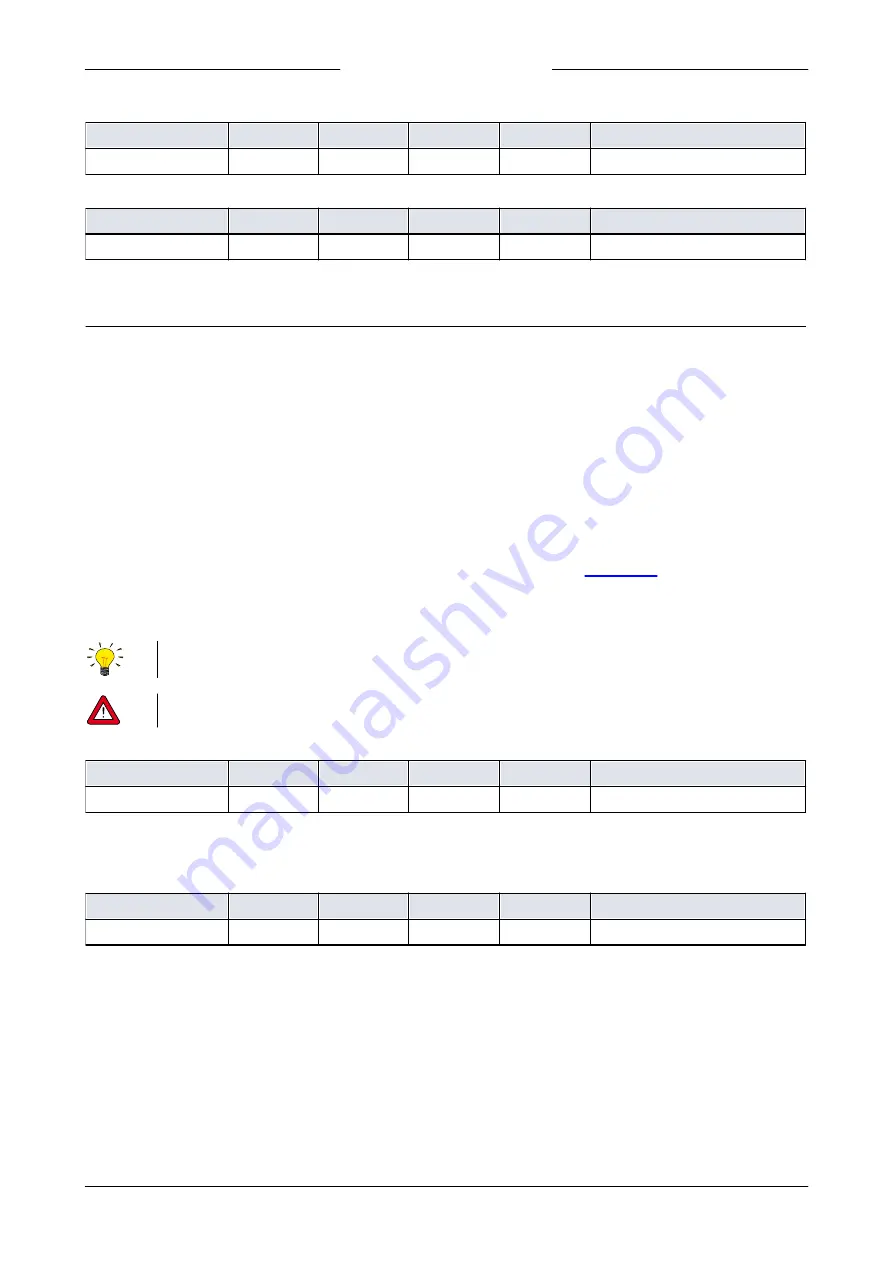
Bronkhorst®
Instruction Manual EL-FLOW® Prestige
9.17.084N
48
Fieldbus 2 Baud Rate
Type
Access
Range
FlowDDE
FLOW-BUS
Modbus
Unsigned long
RW
0…1.0E10
310
124/9
0xFC48…0xFC49/64585…64586
Fieldbus 2 Parity
Type
Access
Range
FlowDDE
FLOW-BUS
Modbus
Unsigned char
RW
0…2
336
124/12
0x0F8C/3981
The following values are supported:
Value
Description
0
No parity
1
Odd parity
2
Even parity
4.2.7
Master/slave configuration (FLOW-BUS)
Normally, there is no communication between slave instruments in a fieldbus system. The FLOW-BUS protocol, however,
provides a feature to set up a master/slave relationship between two instruments. The typical behavior of a slave
instrument is to automatically set its own setpoint relative to the output (measurement value) of its master.
The output value of any instrument connected to a FLOW-BUS network is automatically available to all other instruments
without extra wiring. A slave instrument can in turn be a master to other instruments.
To setup a master/slave relationship between instruments, first determine which instrument should be the master and
which should be the slave, then set
Control Mode
of the slave instrument to ‘FLOW-BUS Slave’ (value 2) or ‘FLOW-BUS Analog
Slave’ (value 13), depending on how the setpoint should be calculated (see parameter
).
The slave instrument polls the output value of its master periodically and uses the slave factor to set its own flow relative to
the master's.
Setpoints from master instruments can be received via FLOW-BUS only.
To prevent damage to the instruments an/or the system(s) they are connected to, be sure to avoid circular references
between devices on the same fieldbus. The FLOW-BUS system does not have a protection mechanism.
Master Node
Type
Access
Range
FlowDDE
FLOW-BUS
Modbus
Unsigned char
RW
1…128
158
33/14
n/a
Set the master node for the instrument
Note that this parameter only is effective in a FLOW-BUS system via RS-485.
Slave Factor
Type
Access
Range
FlowDDE
FLOW-BUS
Modbus
Float
RW
0…500
139
33/1
0xA108…0xA109/41225…41226
The controller output from the master instrument is multiplied by
Slave Factor
/100% to get the slave instrument setpoint.
In systems other than FLOW-BUS via RS-485,
Slave Factor
is effective only if
Control Mode
is set to 'Analog slave', and the
analog output signal of the master instrument is redirected to the input of the slave instrument.
Example:
·
master output = 80%
·
Slave Factor
= 50
slave instrument setpoint = 80% x 50%/100% = 40%










































